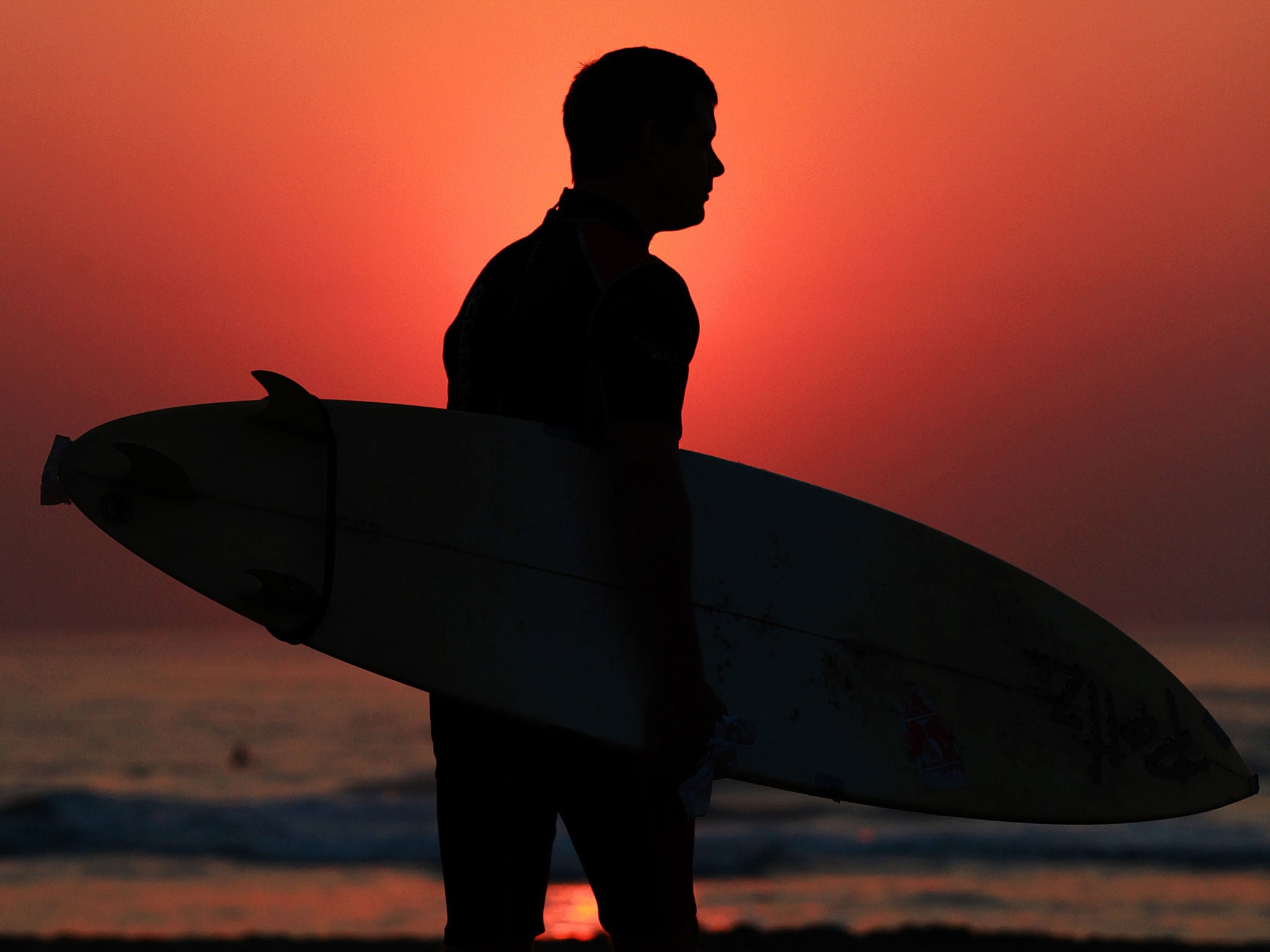Andy Martin: Why Nelson Mandela may have spent his lonely prison hours dreaming of catching a wave
The street children taking to the boards on South Africa’s foaming surf may be following the inspiration of the country's former leader himself

It’s there in black and white. Tinged, appropriately enough, with blue. On the inventory – handwritten in Afrikaans – of Mnr. N. Mandela’s personal eiendom (property) on leaving Victor Verster Prison outside Cape Town in 1990, alongside assorted boxes, a suitcase, a white cardboard hat, weights, two umbrellas and an exercise bike, we find the following item: “1 surf bord”. The official Afrikaans word is branderplank, but “surf bord” is sometimes used as a transliteration of “surfboard”.
The inference is clear: Nelson Mandela was a surfer. What this document (preserved in the digital archives of the Nelson Mandela Foundation) doesn’t specify is whether he preferred a three-fin high-performance thruster or a classic Malibu-style longboard – traditional wood or modern foam and fibreglass?
In his autobiography, Long Walk to Freedom, Mandela writes that in his first 20 years in prison, on Robben Island, he had “accumulated very few possessions” but that in his final years “I had amassed enough property – mainly books and papers – to make up for previous decades. I filled over a dozen crates and boxes.” No reference to the surfboard. I scoured the pages in vain for further references to his prowess on the epic waves of South Africa. But after coming across this haunting reference to a surfboard sharing imprisonment with Mandela, I couldn’t help but wonder: had he perhaps surfed, as I had, the legendary break of J-Bay – Jeffreys Bay on the east coast – with its perfectly formed, long-lasting tubes?
We know that Mandela was a keen swimmer in his youth and his “cottage” in the low-security prison where he spent his final years even came equipped with an outdoor pool. At what point he morphed from swimmer to surfer is unclear, but gazing through the bars of his cell on Robben Island he must have dreamt of escaping in baggy shorts and T-shirt atop a great, frothing, all-redeeming giant wave. At the very least, Mandela’s surfboard will have symbolised freedom, beyond all the prison walls and the barbed wire and the hard labour.
It used commonly to be said, whenever a kid caught his first wave – on the assumption that he would be derailed by surfing – “he’ll never make president now”. All that is going to have to change. Henceforth, bystanders will be heard to mutter: “He’ll have a decent shot at the presidency when he grows up.” Or, further down the line: “That insane cutback virtually guarantees our boy’s nomination.”
Mandela, after all, is not the only surfing president. Barack Obama followed naturally in his wake, carving out similar lines in the political sphere. The link between them is Hawaii and the “sport of kings” as Jack London referred to it. “Sport of presidents” would be more apt.
Obama, born in Honolulu on the south shore of O’ahu, has shown himself to be a competent body-surfer, even if he never graduated to the faster, more challenging winter surf of the North Shore (realm of Pipeline, Sunset Beach and Waimea Bay). But of course he went to school in a culture suffused with reverence for the figure of Duke Kahanamoku.
Kahanamoku was one of the original “beach boys” of Waikiki, but made his name winning Olympic gold medals (in 1912 and 1920) for swimming, embodying grace under pressure on his wooden board, and finally evangelically spreading the word of surfing far and wide. In the midst of the First World War, while millions were dying in the killing fields of Europe, Duke took surfing to Australia, where he mesmerised a beachside crowd in Sydney by riding a wave standing on his head.
Surfing, throughout the 20th century, represented not just an alternative to war, but the counter-cultural gesture par excellence. Both presidents, Mandela and Obama, owe much to the tradition of Duke Kahanamoku and Hawaiian “aloha”. Poised between East and West, North and South, Hawaii’s philosophy of harmony between man and wave, body and soul, certainly fed into the concept of reconciliation and cohesion exemplified by the rainbow nation.
Earlier this month a crowd of 15,000 celebrated Reconciliation Day on the beach watching the Kusyay’igagasi (“hit the waves”) Surf Contest in Durban. It was won by Ntando Msibi, 16, representing the Surfers Not Street Children team (mentored by Tom Hewitt).
For the first time in any surfing contest anywhere, it was presented entirely in isiZulu, the mother tongue of most of the inhabitants of KwaZulu-Natal.
And it took place just after the death of Nelson Mandela, so it was as if the great man’s mysterious magic board had been passed on to a new generation of South African rippers.
Many thanks to Rob Hewitt for help researching the Mandela archives
@andymartinink
Subscribe to Independent Premium to bookmark this article
Want to bookmark your favourite articles and stories to read or reference later? Start your Independent Premium subscription today.

Join our commenting forum
Join thought-provoking conversations, follow other Independent readers and see their replies